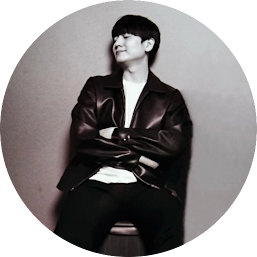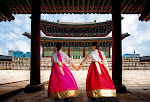Discover the hidden gems of Korea's rich cultural tapestry, woven from centuries of history, tradition, and resilience.

Introduction

Background & Cultural Context

Korea's cultural heritage is a testament to the country's resilience and adaptability. Despite centuries of foreign invasions, colonization, and war, Korea has managed to preserve its cultural identity, passing it down from generation to generation.
Key Highlights
Korea's UNESCO cultural heritage is a treasure trove of diverse and fascinating assets. Here are some of the key highlights:Bulguksa Temple
Located in Gyeongju, Bulguksa Temple is one of Korea's most famous Buddhist temples. Built in 751 CE, it is a masterpiece of Buddhist art and architecture, featuring intricate carvings, vibrant paintings, and stunning gardens. The temple is home to several national treasures, including the iconic Seokgatap Pagoda.Gyeongju Historic Area
Gyeongju Historic Area is a UNESCO World Heritage Site that showcases Korea's rich cultural heritage. This ancient city was once the capital of the Silla Kingdom and features a plethora of historical sites, including the Cheomseongdae Observatory, the oldest existing astronomical observatory in Asia.Pansori
Pansori is a traditional Korean form of storytelling that combines music, singing, and drama. This unique art form has been recognized by UNESCO as a Masterpiece of the Intangible Heritage of Humanity. Pansori performances are a testament to Korea's rich cultural heritage, showcasing the country's love for music, poetry, and drama.Hansik
Hansik, or Korean cuisine, is a vital part of Korea's cultural heritage. This unique culinary tradition emphasizes the use of fresh ingredients, seasonality, and simple preparation methods. Korean dishes like kimchi, bibimbap, and bulgogi have gained popularity worldwide, introducing people to Korea's rich food culture.Practical Tips
If you're planning to explore Korea's UNESCO cultural heritage, here are some practical tips to keep in mind: * Visit Bulguksa Temple during the spring or autumn for the most stunning scenery. * Wear comfortable shoes when exploring Gyeongju Historic Area, as you'll be doing a lot of walking. * Attend a Pansori performance at the National Theater of Korea in Seoul for an unforgettable experience. * Try traditional Korean dishes like hansik at local restaurants or markets to experience the country's rich food culture.FAQ
Here are some frequently asked questions about Korea's UNESCO cultural heritage:Q: How many UNESCO World Heritage Sites are there in Korea?
A: There are 15 UNESCO World Heritage Sites in Korea, including Bulguksa Temple and Gyeongju Historic Area.
Q: What is the significance of Pansori in Korean culture?
A: Pansori is a traditional Korean art form that combines music, singing, and drama. It is a vital part of Korea's cultural heritage, showcasing the country's love for music, poetry, and drama.
Q: Can I try traditional Korean cuisine at local restaurants?
A: Yes, you can try traditional Korean dishes like hansik at local restaurants or markets. Many restaurants also offer vegetarian and vegan options.
Q: Are there any cultural festivals or events that I can attend?
A: Yes, Korea has several cultural festivals and events throughout the year, including the Gyeongju Cherry Blossom Festival and the Seoul Lantern Festival.
Conclusion
Korea's UNESCO cultural heritage is a treasure trove of unique and fascinating assets that showcase the country's rich cultural identity. From Bulguksa Temple to Pansori, Hansik, and Gyeongju Historic Area, these cultural treasures are a testament to Korea's resilience, adaptability, and creativity. By exploring Korea's UNESCO cultural heritage, you'll gain a deeper understanding of the country's history, values, and traditions. So why not start your cultural journey today and discover the wonders of Korea's UNESCO cultural heritage?Want to dive deeper into Korea?
Visit our YouTube channel and subscribe for thoughtful videos about Korean culture:
https://www.youtube.com/channel/UC5bGr7yGb8eHZsRtgpuTvXA





0 Comments